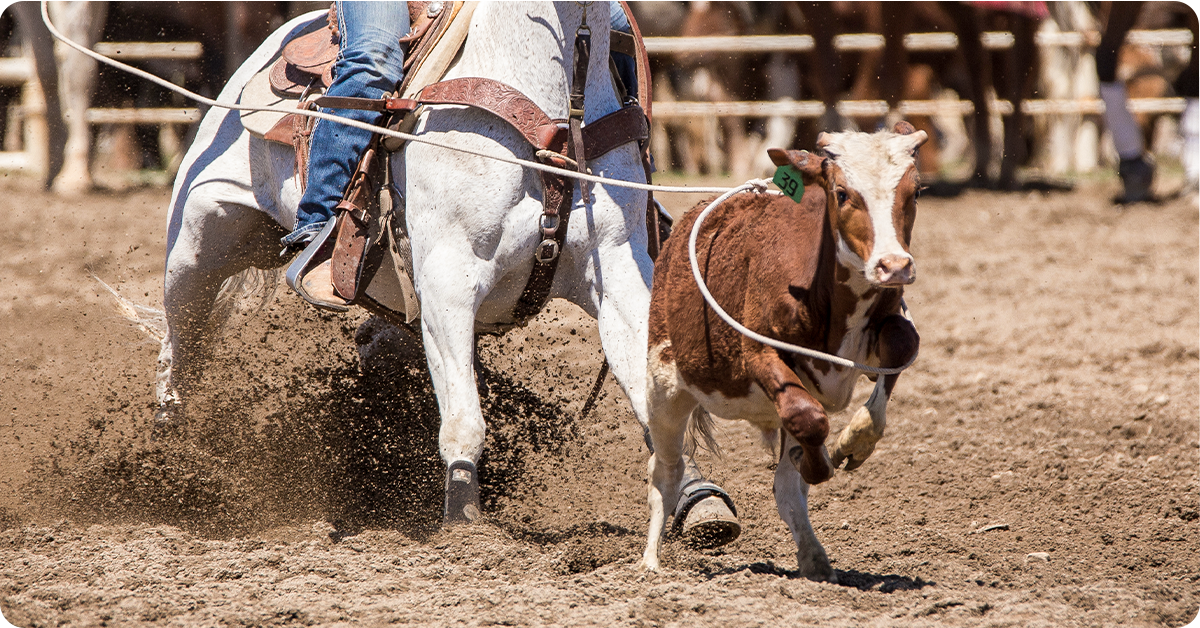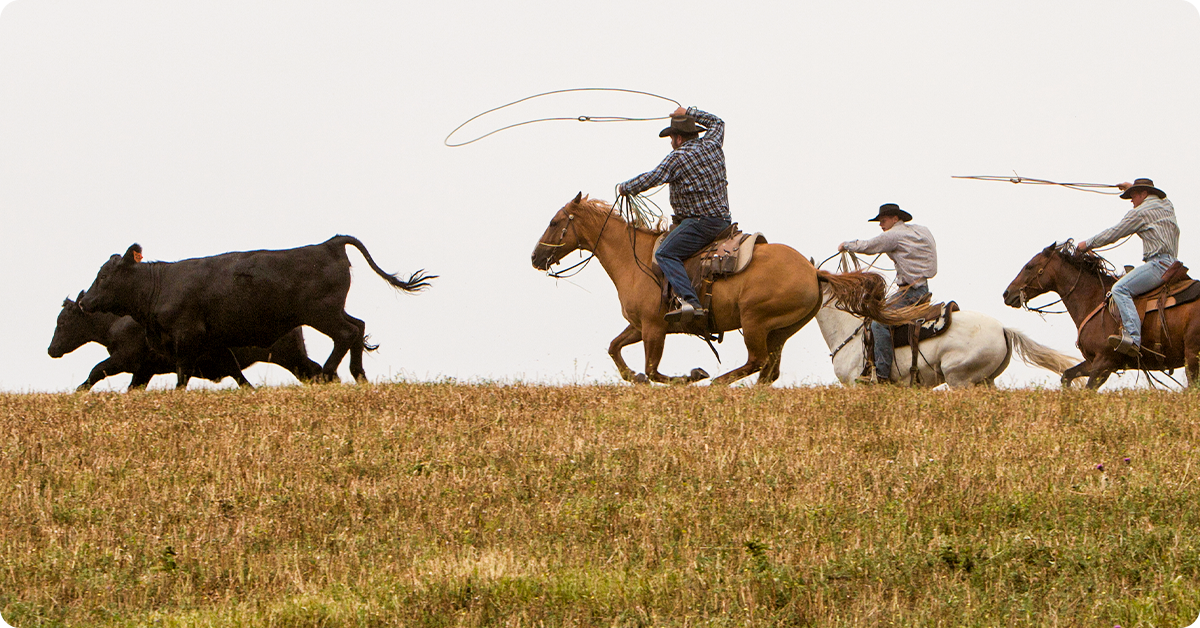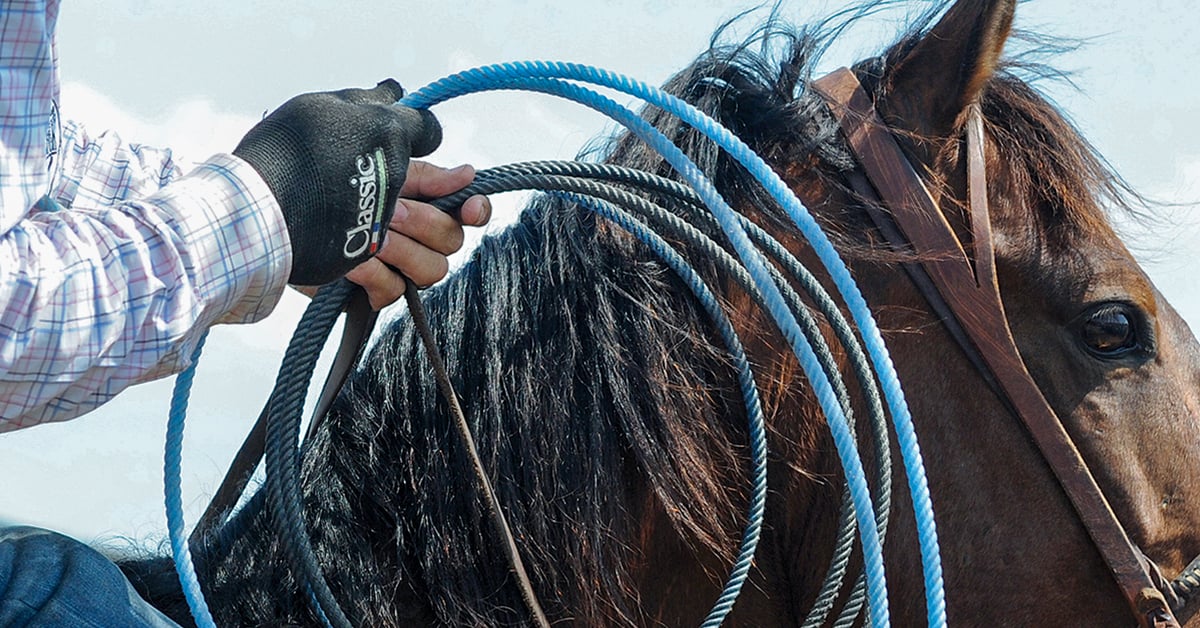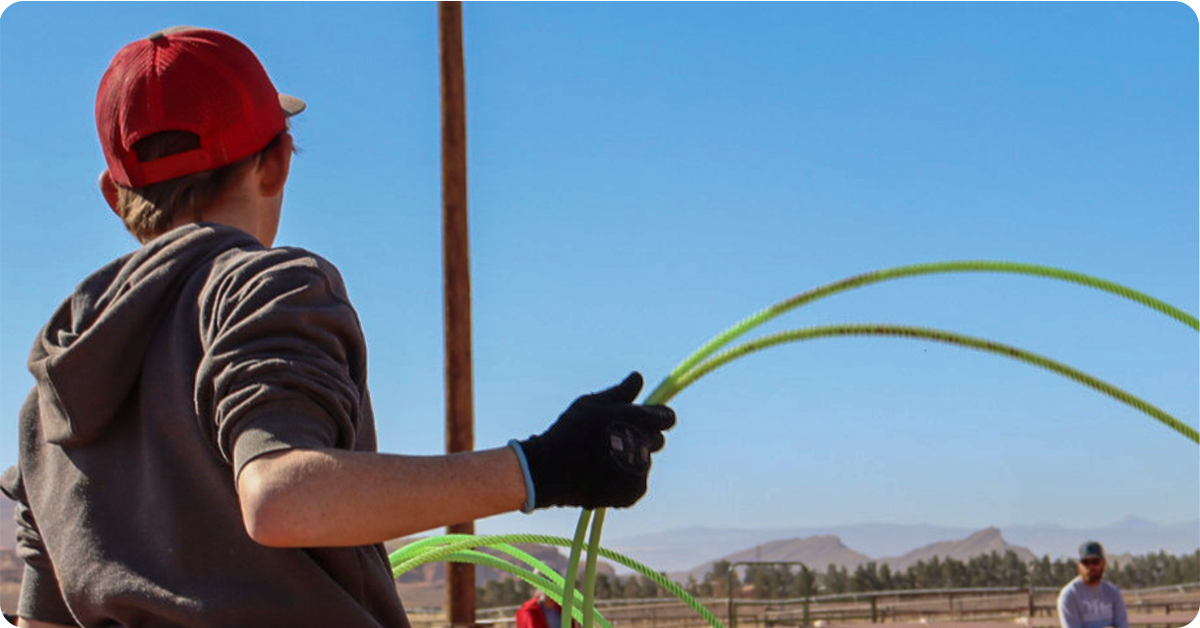“A good rope is any rope that’ll catch.” Any cowboy or cowgirl experienced in roping on the ranch or in the arena might share this time-old wisdom when asked how to choose a good rope. But how do you ACTUALLY choose a good rope that will help you catch?
It’s not an exact science and it's true any rope can be a good rope if you can catch with it, but rope manufacturers have developed a variety of rope styles with unique attributes specially suited to help with a particular event or task.
Rope Types and Events
Every rope is not limited to a single task but specific styles and attributes can help suit it to a particular activity. With the help of new rope making techniques and technologies, rope manufacturers have developed a variety of rope styles and options to meet the specific needs of different ropers.

Head ropes are designed to meet the specific needs of team roping headers. In the sport of team roping, the header’s job is to capture a running steer with a legal catch around both horns, the neck or “half head” (one horn and the nose). After catching the steer the header takes his dally, or wraps the rope around the saddle horn and turns the steer for the heeler.
Ropes designed specifically for heading range in length from 30 to 32 feet. Head ropes can be found in varying lays or stiffness ranging from super or extra-extra soft to medium soft and are designed for a quick, snappy action to close around the steer’s horns.
Heel ropes are made to help team ropers capture the hind legs of a steer after the animal has been turned. The heeler tries to capture one or both legs to give the team a legal time.
Heel ropes are generally 35 to 36 feet in length and will generally have a stiffer lay than other ropes. Stiffness is important to give the heel rope “body” to stay open after it is delivered. Depending on the roper’s personal preference, heel ropes can be purchased in a soft, medium-soft, medium or medium-hard lay.

Calf and breakaway ropers are tasked with roping a running calf around the neck in a clean “bell-collar” catch. Calf ropers, also known as tie down ropers, secure the end of the rope to their saddle while breakaway ropers tie the end of the rope with a thin string that is designed to “break away” from the saddle for the time to stop.
Both calf and breakaway ropes are softer and often more weighted than team ropes. This allows the rope to close quickly around the target preventing the calf from running through the loop. These ropes are often shorter than team and ranch type ropes but can range from 24 to 35 feet allowing the roper to cut it to their desired length.
Ranch ropes are versatile and designed to meet the needs of cowboys in the branding pen and on the range. Ranch ropes have the greatest variance of length out of any type of rope to meet the different needs of ranchers.
Ranch-specific ropes generally start at 35 feet and can go as high as 60 feet in length. While most ranch ropes have a raw-hide burner on the eye of the rope, there are ropes that can be purchased with metal hondas for added strength, weight and longevity of the rope.

How to Choose a Rope
Choosing a rope will depend largely on the activity you want to use it for and your personal preference.
1. Find the Right Style
To select a rope, start by identifying the ropes that fit the style of roping you plan on doing. Sometimes you can identify a type of rope just by looking at them but if you are unsure or just want to check, locate the rope label on the tail end of the rope. Most team ropes and some breakaway, ranch and calf ropes will be labeled for their specific purpose (i.e: “head rope”, “heel rope”, “breakaway”).
2. Choose the Length
Almost all rope labels will indicate the length of the rope. This length can help you identify the type of rope if it is not on the label as well as help you select the right rope for your needs.
Head ropes will range in length from 30-32 feet and heel ropes from 35-36 feet. Calf and breakaway ropes can range from 24 all the way to 35 feet allowing the roper to cut it to their desired length. Ranch ropes have the greatest variance in length of all rope types with ropes ranging from 35 all the way to 60 feet in length.
3. Consider the Diameter
The diameter of a rope will affect how the extra coils feel in your hand as well as the rope weight when you swing. Most team and ranch ropes are measured in inches with ⅜ inch being the standard diameter. Ropes that have this standard diameter are sometimes referred to as “full” or “true” while ropes smaller in diameter are referred to as “scant”.
Breakaway and calf rope diameters are most often measured in millimeters and this size is often put on the rope label. Poly calf and breakaway ropes can be 8.0, 8.5, 9.0, 9.5 and 10.0 millimeters in diameter with a 9.5 being comparable to a ⅜ “full” rope.
4. Choose a Rope "Lay"
If you are selecting a team rope, you will want to look at the “lay” or stiffness of the rope. There are six common lays that can be found on a team rope label: super soft (also extra-extra soft), extra soft, soft, soft medium, medium and medium hard.
Head ropes are going to be super soft, extra soft, soft or medium soft while heel ropes can be medium soft, soft, medium or medium hard.
Softer ropes are often recommended for beginner ropers. Softer ropes are easier when learning to swing and identify key elements of the loop and throw when getting started.
As the loop circles your head you should feel a tug on the end of your rope, this is the “tip” of the rope or the tip of your swing. A softer rope helps you identify the tip of your loop which is important because the tip affects every part of your throw from aiming to releasing. Learning to “feel” the tip of the rope is important for every beginner.
Beginners can learn on any type of rope but ropes with stiffer lays and longer lengths tend to figure-eight and tangle if the roper does not have good control of the rope tip and an open swing.
It is a good idea to start learning on a smaller, shorter rope especially if the roper is younger. Youth practice and dummy ropes range from 15-24 feet in length and generally have a smaller diameter than full size ropes allowing the roper to focus on the loop with less rope in their hand.
If you have questions about rope types or how to read a rope label, reach out to a knowledgeable member of our team.













